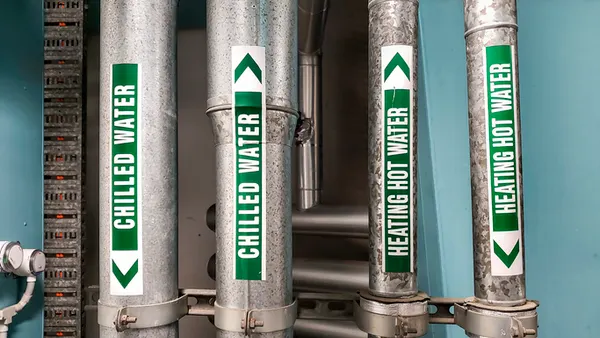Dive Brief:
- A bipartisan group of 12 senators on Jan. 18 introduced legislation to address the shortage in distribution transformers and block a proposed U.S. Department of Energy rule that aims to tighten energy efficiency standards for the essential pieces of grid equipment.
- DOE proposed stricter efficiency standards for transformers in 2022, but utilities have warned the new requirements could lead to higher costs and delays to electrification efforts. The proposed rule would mean changes to transformers’ construction, requiring an overhaul of portions of the U.S. steel industry.
- A DOE spokesperson said the agency is working to finalize a transformer rule “that is responsive to the comments” and said it agreed with lawmakers that long-term solutions must maintain “a secure domestic supply of electric steel.”
Dive Insight:
Most stakeholders say more efficient distribution transformers are needed, but utilities and some lawmakers warn that moving too quickly will leave the U.S. grid exposed to potential reliability challenges.
Most distribution transformers are made with grain-oriented electrical steel, or GOES, but DOE’s proposed rule would essentially transition the electric industry to using amorphous steel cores. There is only one domestic manufacturer of each type of steel, however.
“By effectively forcing the distribution transformer industry to change the type of steel it uses almost overnight, [the] Department of Energy’s rule would actually jeopardize electricity distribution for millions of Texans and Americans, with potentially disastrous results during extreme weather,” Sen. Ted Cruz, R-Texas, said in a statement.
The Distribution Transformer Efficiency & Supply Chain Reliability Act of 2024 is sponsored by Cruz and Sen. Sherrod Brown, D-Ohio. Original co-sponsors also include Sens. Joe Manchin, D-W. Va., Marco Rubio, R-Fla., Kyrsten Sinema, I-Ariz., and Jon Tester, D-Montana.
The bill would establish a new energy efficiency standard for transformers “but at levels that preserve market opportunities for GOES as well as amorphous steel,” according to a description of the bill provided by Brown’s office. The new standard would be set in the Energy Policy and Conservation Act, rather than developed by rulemaking, and includes a 10-year phase-in.
The bill also limits DOE’s ability to finalize new standards on certain types of transformers.
The National Rural Electric Cooperative Association, the American Public Power Association and the Edison Electric Institute, which represents investor-owned utilities, support the bill.
The legislation “would establish a stronger and more sustainable domestic market for high-efficiency distribution transformers, and we urge Congress to act quickly to enact this bill into law,” EEI President and CEO Dan Brouillette said in a statement. “Significant and ongoing supply chain challenges are impacting the transformer production process, limiting the availability of transformers and threatening electric reliability.”
The bill is also supported by the National Electrical Manufacturers Association, National Association of Home Builders and Cleveland-Cliffs, the only producer of GOES for distribution transformers in North America.
Domestic production of GOES “is critical to America’s electric grid reliability and, by extension, its national and economic security,” Cleveland-Cliffs CEO, Chairman and President Lourenco Goncalves said. Continued investment in GOES by the company “requires common sense energy policy that promotes efficiency.”
Some supporters of DOE’s proposed rule were unimpressed by the Cruz-Brown solution.
“A weak standard that takes effect in ten years would do nothing to fix the near-term transformer availability challenge,” Andrew deLaski, executive director of the Appliance Standards Awareness Project, said in an email.
The Brown-Cruz bill would cut the energy and dollar savings from the proposed rule “roughly in half,” deLaski said. And that comparison does not account for the delay required under the bill, he added: The proposed rule would have a compliance date of 2027; under the new bill the compliance date could be no sooner than 2034.
Instead of waiting, deLaski said Congress and the Biden administration should “support transformer manufacturing with new investments” while DOE finalizes its standard. “We don’t need to wait a decade to shift the market toward efficient products that would have a more reliable domestic supply chain.”
Efficiency standards for distribution transformers were last updated in 2013. DOE proposed its new standard to come into effect in 2027, estimating it would save consumers approximately $15 billion over 30 years.















